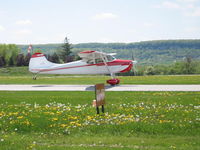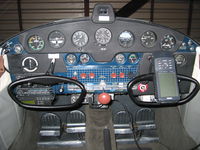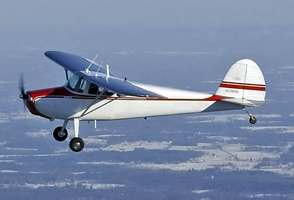Yep. Think of flying the airplane along the runway and rolling the wheels onto the pavement, then as they do so, attempting to descend still further by slight forward elevator. (Don't worry too much about striking the prop. It's very unlikely because: 1-prop diameter's approved for engine/airframes provide generous clearance. 2-as the elevator is pushed forward the relative wind strikes more of the upper wing surface increasing resistance to noseover. (tends to hold the plane to the ground and in a level attitude)
The earlier comments about braking reminded me that, when performing wheel landings, I actually find myself first providing forward elevator for the landing phase...then aft elevator during heavy braking phase of the wheel landing. Looking out the windshield, just don't let it begin to noseover during heavy braking. (Great time to get the tailwheel on the ground anyway as the rudder is about to lose effectiveness very quickly during heavy braking.)
The only time I ever scared myself during heavy braking on a 170 was when I was taxying southbound paralleling Rwy 12R at San Antonio, and (from my seven o'clock position) a landing 737 painted like a whale exited the runway via a high-speed and without prior clearance and oblivious to my right-of-way passed me up and across my taxiway.

I was changing frequencies with my left hand and holding my taxi chart in my right in a rare moment when I wasn't holding the yoke. (Took a chance at the wrong moment.)
I had gotten a refresher-course that a particular airline believes they have the right of way in all circumstances, that ATC has Space-A privileges with them and won't so much as scold them, (and that it's really a foolish thing to let go of a taildragger's yoke at any time.) I really expected the prop to strike as the airplane developed quite a nose-down pitch angle. Fortunately releasing the brakes immediately corrected the situation and I was able to grab the yoke back and reapply brakes.


